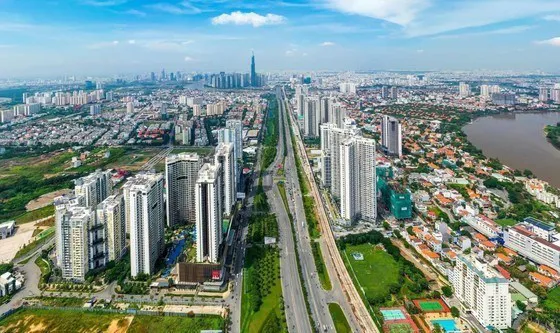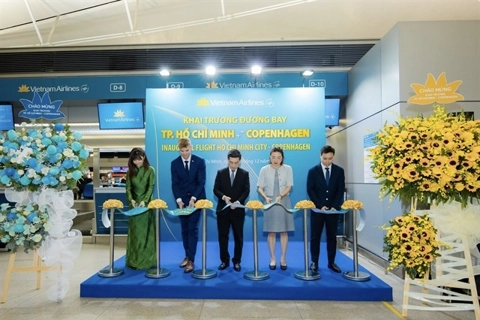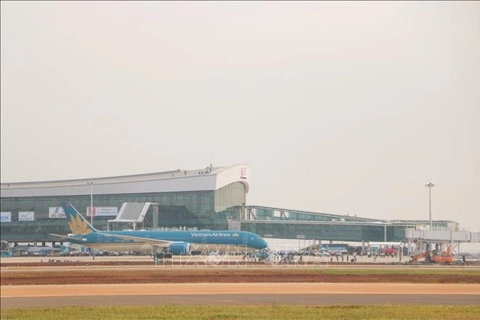There will be no administrative model of city-within-a-city in Vietnam
The plan marks a fundamental shift toward a simpler two-tier government structure: provincial and communal.
THE HANOI TIMES — Prime Minister Pham Minh Chinh has approved a plan to abolish the administrative model of city-within-a-province, city-within-a-subnational city, and district- and district-level units, including towns and townships.

Part of Thu Duc City in Ho Chi Minh City. Photo: Ho Chi Minh City Media Center
This decision is part of a plan to streamline the administrative structure at all levels and establish the two-tier local government.
It responds to recent directives from the Politburo, the Secretariat, and the conclusions of the Central Committee at its 11th Plenary Session. The plan marks a fundamental shift toward a simpler two-tier government structure: provincial and communal (where two or more communes or wards will be merged into one).
Currently, Vietnam has 84 cities under provincial jurisdiction, 53 towns, and two that function as city-within-a-city (Thu Duc City in Ho Chi Minh City and Thuy Nguyen City in Haiphong City). Under the current law, all these cities are classified as district-level units. According to the reform, the district-level category will be abolished in order to improve public services and bring them closer to the people.
Island districts and island cities will be reclassified as communal-level "special zones." Eleven island districts, such as Van Don, Truong Sa, Hoang Sa, and Con Dao will become special zones under the direct authority of the province. Phu Quoc City may be divided into two special zones: Phu Quoc and Tho Chau.
Areas that are remote or strategically important in terms of national defense or sovereignty will not be subject to mergers. After the reform, the number of communes and wards is expected to be reduced by 60%-70%, ensuring an appropriate geographical and demographic balance.
Historical, cultural and ethnic factors, as well as socio-economic development, transportation infrastructure, information technology, national security, and international integration will be taken into account in the process of territorial reorganization.
The overarching goal is to promote national development by expanding the development space. Priority will be given to the reorganization of administrative units in mountainous, coastal and deltaic regions, and the merging of adjacent units to support rapid and sustainable growth.
The plan also pays attention to placing economic zones, industrial parks, cities, ports, logistics centers, hydroelectric dams and reservoirs under the jurisdiction of one ward or commune for more efficient management.
According to Resolution 60 issued on April 12, 11 provinces and cities, including Hanoi, Hue, and several northern border provinces, will remain unchanged. The remaining 52 will be consolidated into 23 subnational units, bringing the total nationwide to 34 provinces and cities (28 provinces and six cities).
There will be two levels of local government: provincial and communal. The district level will be abolished once the National Assembly approves amendments to the 2013 Constitution and the Law on Local Government Organization this year.










